Braces are orthotic devices used to hold a part of the body in the correct position to allow function and healing. Leg braces for CMT help support and hold a part of the body compromised by muscle weakness, muscular atrophy, and sensory impairment. Many CMT patients consequently need to wear special footwear, foot orthoses and ankle-foot orthoses (AFOs) to maintain independent ambulation. But there are a variety of braces available for ankles, knees, feet, hands, and other areas weakened by CMT. Even your neck and spine can be braced. For many with CMT, brings newfound ability to walk quickly and smoothly and greater independence in everyday activities.
What bracing options are available for child with CMT who are still growing?
Bracing for children with CMT should consist of all the same clinical evaluations and goals as for adults. The only difference is consideration for growth. As growth rates cannot be controlled or clinically predicted, it is to the discretion of the practitioner on whether or not they could build in extra length to the device for potential growth without compromising fit, stability, and function. Here are the factors used to determine and prescribe an orthosis. As you can see, age is a relevant part in the person overall condition: Strength of various muscles, age, overall strength, hand involvement, extent of damage to muscles, tendons, ligaments, bones, joints, and balance.
What is the difference between orthoses and braces? What are the different types of braces recommended for someone with CMT?
An ORTHOSIS is an orthopedic appliance or apparatus used to support, align, prevent, or correct deformities or to improve function of movable parts of the body. It is both a clinical service and a product. However, the clinical portion comes first and must be of sound biomechanical correction for the orthosis to work. Bracing is a type of orthosis. A brace is an orthotic device that is used to support and hold any part of the body in the correct position to allow function and healing, such as a leg brace that permits walking and standingTypically, people with CMT use braces in their lower extremities but there are also bracing options available for deformities on the spine and hands and arms. Ankle-foot orthoses (AFOs) are any orthotic device for the lower limb that enclose the ankle and foot and do not extend above the knee. These are intended to prevent footdrop by stabilizing the foot and ankle. Knee-ankle-foot orthoses, are orthotics that also accommodate for knee stabilization problems and stem from above the knee to the foot. Knee-ankle-foot orthoses are used when muscle weakening and wasting has spread to the thigh muscles and exacerbate knee-stabilization problems during gait and causing sudden knee bending. Here is a list of specific types of orthoses. Consult your doctor to see what kinds of options are available for you:Posterior leaf spring Ankle-foot orthosis (AFO)Solid ankle AFOFloor reaction AFOJointed AFORange-of-motion adjustable jointed AFOEnergy storing carbon fiber AFOKnee-ankle-foot orthosis (KAFO)Energy storing KAFOOff-the-shelf AFOs (not recommended for CMT patients with moderate deformity and above)
What outcomes can I expect from braces?
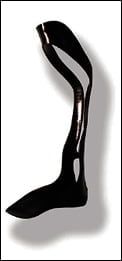 Corrective bracing for people with CMT aim to correct alignment of joints, restore balance, prevent further deformity, and promote more functional gait for increased mobility. What about bracing? People find themselves much more capable when wearing their AFOs. Custom-made ones are best, and expect alterations until they feel right for you and don’t hurt. Some people don’t even need AFOs but manage very well with sensible flat shoes, probably lace-ups, and some only need in-shoe orthotics that can’t even be seen. A lot of people with CMT wear athletic walking shoes all the time, and high-tops can really help stabilize the ankle if you’re into sports.Simple wrist braces can help a person work longer, but getting away from the type of work that puts undue stress on any part of your body is the smartest way to go when something is weakened. Figure out why it’s weak, and then don’t do it. That’s fine advice if the activity isn’t one you must do, like walking, breathing or eating. If you stand on your feet all day, or your job demands that you walk many miles a day, and your legs, ankles and feet are suffering, try to find another job somewhere with the same company that doesn’t demand you do this.
Corrective bracing for people with CMT aim to correct alignment of joints, restore balance, prevent further deformity, and promote more functional gait for increased mobility. What about bracing? People find themselves much more capable when wearing their AFOs. Custom-made ones are best, and expect alterations until they feel right for you and don’t hurt. Some people don’t even need AFOs but manage very well with sensible flat shoes, probably lace-ups, and some only need in-shoe orthotics that can’t even be seen. A lot of people with CMT wear athletic walking shoes all the time, and high-tops can really help stabilize the ankle if you’re into sports.Simple wrist braces can help a person work longer, but getting away from the type of work that puts undue stress on any part of your body is the smartest way to go when something is weakened. Figure out why it’s weak, and then don’t do it. That’s fine advice if the activity isn’t one you must do, like walking, breathing or eating. If you stand on your feet all day, or your job demands that you walk many miles a day, and your legs, ankles and feet are suffering, try to find another job somewhere with the same company that doesn’t demand you do this.
For instance, if you keypunch all day long and your fingers are getting so weak you are making mistakes, try to develop further skills so you’ll be eligible for another job where keypunching isn’t the main activity. Your fingers won’t get stronger keypunching but will continue to weaken, and that weakness will carry over into your personal life and include everything from preparing meals to making beds and wiping your behind. This is serious stuff; you have to be aware of what is happening to you and beware of occupational hazards. Even a hobby can weaken you if it is repetitive and you are continuously working muscles that are served by CMT nerves.
Why does CMT cause mobility impairments and how do braces help?
CMT is characterized by the atrophy of motor and sensory neurons with consequent muscle weakening and sensory reduction in the limbs. The main problems in the lower extremities are impaired stance and gait, which stem from footdrop, foot rotation, and planerflexion failure (think, inability to flex feet). Most people need to wear special footwear, foot orthoses, and ankle-foot orthoses (AFOs) in order to walk independently. Footdrop and balance loss are the most common complaints CMT patients have when evaluating for AFOs. Balance loss can cause pathological gait to be more exaggerated. With standing balance loss, CMT patients will need to rely on leaning on objects while standing, and touching objects such as walls while walking. The effects of foot drop and balance loss can overtax existing musculature that is working, early fatigue, and heightened risk of tripping and falling which means increased risk of injury. Aside from the physical implications, falling and fatigue weigh on people with CMT psychologically. One study (Vinci, Paoloni, etc. 2010) found that, with every trip or fall, people with CMT felt more insecure aware of their disability. It also found increased fatigue limits people’s ability to go places and do things they want to do, which also can be isolating.




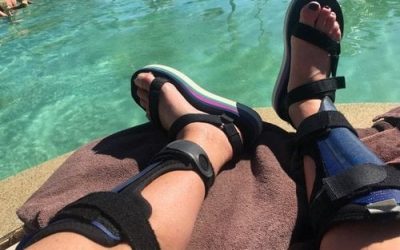

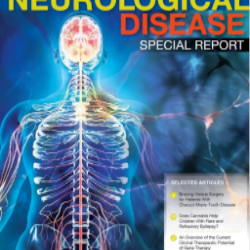
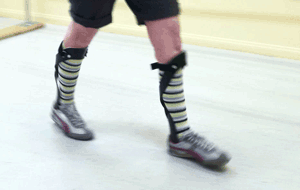
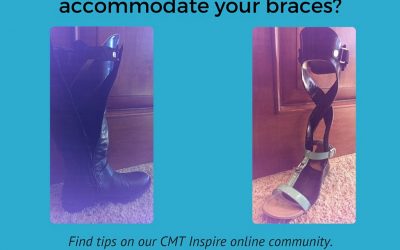
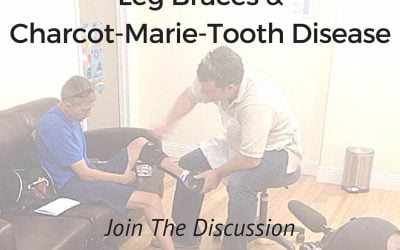



I’ve had CMT for 12 years and have worn several different kinds of AFO.
They do provide stability and balanced. The plastic AFO Orthotics served me well for ten years until the left leg AFO had broken at the Heel .
After speaking to several people on the issues concerning proper shoes and orthotics that work well together I had decided to try out the carbon metal AFO Orthotics which support my legs on the front side of both my legs. I drove to the store that deals specifically in AFO’s and Shoes that are suited for AFO supports.
Lastly: You also may want to consider joining a health care facility where you can also work with P.T. Physical Therapist who is TOTALY familiar with your situation, that can help you one on one work on your BALANCE and MOBILITY Issues.
Live Long and Prosper
Richard
I’m in need of a brace because I have cmt and I’m 41 and I’m tired of falling down slot when I walk and all the surgeries I’ve had to my life growing up hasn’t worked but this brace looks like it does please help me get a brace amen
I live in Athens Greece.I myself have multiple problems..my son is my main concern .He is a teen who has had surgeries but needs stability in gait.Who ships to Greece or better yet has an affliate which we could visit?
I am looking for an orthotist that has the Helio AFO’s and knows how to fit them. I live in Clayton, CA about 24 miles east of San Francisco.
Hi Dennis,
Please look through out HCP Directory. We are adding new doctors weekly. https://www.hnf-cure.org/provider-directory/
Where can I get leg braces?
What if you have had surgery for cmt. Will braces work?
My balance is getting more challenging
I also have neuropathy from diabetes
I am 60 and never used braces
I use the ASO Ankle stabilizer, sold thru Amizon.com for around $30.
Thanks Maggie for the information!
How to get the helios brace..
I use ankle braces…have been to john hopkins as well as duke university…medical center…nothing has corrected my walk or gait left leg.
.somewhat diagnosed at duke 1995 or 1996…with ankle braces provided by military..veterans association…i still walk on outsiede both feet wearing out shoes quickly…info needed thanks
Hi Carl,
Contact http://heliosbracing.com/
Please look for a scientific grounded AFO. The NEURO SWING AFO. We provide orthoses to most VA hospitals across the country.
https://youtu.be/O9zOnfhkRxQ
Dear sirs,
My name is Christian Saborio, I live in Costa Rica (Central America).
My three year old son, Andres, has been diagnosed with CMT, since the age of 2 years. He still walks, but with great difficulty and very little balance. I’m looking for a good brace to help him to improve his walking and stability; and to reduce falls and injuries of his ankles.
In Costa Rica there are not of these kind of devices even for children so young.
I want to have a recommendation from you for a model and manufacturer of these kind of devices. Also, if you could give me some recommendation on how to make a proper selection.
I will be looking forward for your response.
Best Regards
I am female 64 y/o, with CMT, and when I walk I throw my foot out, am wondering what kind of over the counter ankle brace might be recommended to stabilize my right foot?
My name is juan Jaramillo , i have CMT, I Would like to get a braces, where are you located?
Hello I am from India age 30 years old with CMT ,I am facing tips and falls and improper balance ,I want these type of braces to help me in my daily life.
Please visit https://heliosbracing.com/ for information about the helios braces.